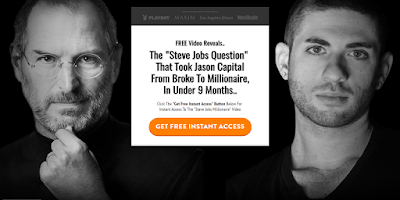Social media can boost the interest of different audiences with every product, and as a business owner, you may consider using social media marketing as a mode to get the word out about your business. The statistics for how many users are on social media daily are staggering, for example, there are 1.4 billion users on Facebook alone. Imagine the number of audience visiting online businesses on finding the right product for their needs.
According to Pew Research Center of Internet and Technology, nearly two-thirds of American adults use social media sites, meaning almost 65% are very much aware of social media as a platform for researching and buying products online. The question is, how can you master social media marketing for your business? Let’s first consider how can social media benefit your business in the long-run.
· Social Media is Cost-Effective – Businesses can take advantage of the low-cost advertising features offered by the social networks to promote their content and boost their advertising efforts.
· Social Media Reaches All People – Social media is accessible, it can reach any person in different countries in an instant. In a recent study, the number of social media users in 2018 reached 3.196 billion and is up to 13% year-on-year. This means that social media defies geographical barriers since it is accessible all over the world.
· Social Media is Customer Service Friendly – Social media networks can be used to showcase the business’s excellent service by answering customer’s inquiry promptly and in a more “friendly” manner.
· Social Media Enables Two-way Communication – You need to have a two-way conversation with your audience on social media to promote your product effectively. For instance, when a customer is interested with your product and sends you a message of inquiry, what would you do? As a marketer you would reply and explain the mechanics of their purchase. In this way, customers will be satisfied with your service, and they are more likely to refer your product to their friends or family.
How can your Business Master Social Media Marketing?
Planning a unique marketing strategy that social media consumers has not yet seen is somewhat complicated, since consumers need fresh news and products that can capture their interest. Though using social media for branding and promotion is a fantastic approach to leverage your very own business, there are crucial elements that you should consider learning: social media marketing runs through an audience, content, and E-commerce.
Here are some tips that will help you get around these three major components of social media marketing:
· Audience
Social media has different types of audiences, for example, on Instagram, people mostly look to pictures and to products that are captured in high-quality standards. Audiences on Facebook are very researched-based, meaning that a captivating content for this type of audience needs full details on what they can get from a certain company. The reason why there are different audiences on social media is that the interest and level of exposure of these audiences are varied from what social media platform they use.
Using social media to communicate with your audience creates engagement, and with this, the attachment of the audience with the content that you are promoting will capture the interest of your customers to purchase an item on your company. Regardless of the audience’s positive or negative comments about your material, it is your mission to reply and supply to their needs. This way, even if the feedback of your audience is negative, it can give your company the impression that you can handle different situations that your company encounters immediately.
· Content
Content is the most crucial element of social media; without content for your audience, your presence will surely be ignored by your audience. When creating your content, always remember that quality trumps quantity, meaning that it’s better to have 1,000 online connections who read, share, and link your content with their audiences than 10, 000 contacts who disappear after connecting with you the first time.
Creating compelling and engaging social media posts can be useful to keep your brand relevant and is crucial to avoid becoming just white noise in the social media content stream. By making your content valuable and engaging, you can creatively and genuinely show your brand’s purpose, rather just being informative and boring in the whole text.
· E-commerce
B2B, B2C, and C2C buyers thrive in social media platforms which makes them a perfect platform if you want to augment your online sales. In fact, most social media sites are introducing new features which you can use to sell more effectively to your target buyers without spamming their social media feeds. In addition to Facebook Advertising, Facebook has recently rolled out a new feature called Marketplace, which is a platform that makes it easier for buyers to search business within their locality. Pinterest, on the other hand, has “Gift’s Feed”, which specifically features Product Pins with pricing, availability and buy links.
Mastering the art of social media marketing is not easy, but with proper planning and research, these tips can help you leverage the platform effectively and produce significant results which can benefit both your customers and your business in the long-run.
Author Bio: Dana Mia Kim is a former business consultant turned into an online marketer. She has worked with several industries such retail, hospitality and fitness companies which helped her to gain knowledge and experience in these fields. With six years’ experience as an online marketer, she has been helping several start-up clothing companies to establish their brands, getting them closer to their desired goals and success. You can contact her on her twitter account.




